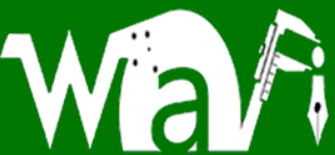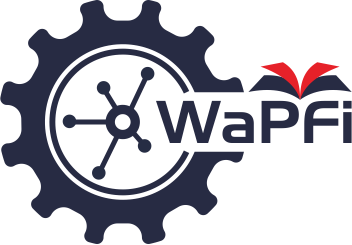Trends of comics on science learning range 2012-2024: A blibliometric analysis
Abstract
Science currently prioritizes the use of media to facilitate learning, one of which is comics. The study has conducted research using a total of 141 documents from the Scopus database with publication years ranging from 2014 to 2024. This study aims to provide an understanding of comic research in science. This article conducts a bibliometric analysis of comic literature in science, focusing on two main research questions: (1) How is the development of comic research in science education? (2) Which authors, affiliations, and countries contribute the most to comic research in science education? (3) What is the trend of comic research in science learning? The research that has been conducted combines quantitative analysis with descriptive methods. In this research process, two software were used, namely Bibliometrix R-tool and BiblioShiny for data analysis, dimensionality reduction, and information mapping, and Flourish for data visualization. The results of the study for this first question found that the annual growth rate was 10.74%. This shows that the number of journal articles discussing the integration of comics in science education continues to increase, reflecting the increasing discussion and sharing of information on this topic. The study also found Jumadi as the author who ranked top for the most frequently mentioned documents globally, Ifugao State University-Tinoc Campus as the institution that contributed the most to research on Comics in Science Education, and the USA ranked top for the country that contributed the most to research on comics in science. The study also illustrated a fluctuating increase from 2012-2024 which was illustrated by the Annual Scientific Production graph. Therefore, to vary the science learning media, comics can be used as one solution, so that further research can further explore comics in science learning, especially physics.
Downloads
References
Aini, E. R., Wibowo, F. C., & Nasbey, H. (2024, May). Effectiveness of game learning media in science subjects: Bibliometric analysis. In AIP Conference Proceedings (Vol. 3116, No. 1). AIP Publishing.
Akcanca, N. (2020). An alternative teaching tool in science education: Educational comics. International Online Journal of Education and Teaching, 7(4), 1550-1570.
Al Husaeni, D. F., & Nandiyanto, A. B. D. (2022). Bibliometric using Vosviewer with Publish or Perish (using google scholar data): From step-by-step processing for users to the practical examples in the analysis of digital learning articles in pre and post Covid-19 pandemic. ASEAN Journal of Science and Engineering, 2(1), 19-46.
Ashraf, M. A., Yang, M., Zhang, Y., Denden, M., Tlili, A., Liu, J., & Burgos, D. (2021). A systematic review of systematic reviews on blended learning: Trends, gaps and future directions. Psychology Research and Behavior Management, 1525-1541.
Büyükkidik, S. (2022). A Bibliometric Analysis: A Tutorial for the Bibliometrix Package in R Using IRT Literature. Journal of Measurement and Evaluation in Education and Psychology, 13(3), 164–193. https://doi.org/10.21031/EPOD.1069307
Chen, H. T. M., & Thomas, M. (2020). Effects of lecture video styles on engagement and learning. Educational Technology Research and Development, 68, 2147-2164.
Comics-based research: The affordances of comics for research across disciplines. Qualitative Research, 21(2), 195-214.
Donthu, N., Kumar, S., Mukherjee, D., Pandey, N., & Lim, W. M. (2021). How to conduct a bibliometric analysis: An overview and guidelines. Journal of Business Research, 133. https://doi.org/10.1016/j.jbusres.2021.04.070
Gemelli, E., Olmedo-Moreno, E., Úbeda-Sánchez, Á. M., & Rodríguez-Sabiote, C. (2024). Bibliometric Study of Scientific Output Between 2011 and 2020 Regarding Teaching-Learning of the Sciences Through Comic Books. SAGE Open, 14(1), 21582440231220107.
Hudha, M. N., Hamidah, I., Permanasari, A., Abdullah, A. G., Rachman, I., & Matsumoto, T. (2020). Low carbon education: A review and bibliometric analysis. In European Journal of Educational Research (Vol. 9, Issue 1, pp. 319–329). Eurasian Society of Educational Research. https://doi.org/10.12973/eu-jer.9.1.319
Kuttner, P. J., Weaver-Hightower, M. B., & Sousanis, N. (2021). Comics-based research: The affordances of comics for research across disciplines. Qualitative Research, 21(2), 195-214.
Lestari, R., Haryono, T., & Erman, E. (2021). Using Comic-Based Socio-Scientific Issues in inquiry learning to increase interest and achievement in science learning. Thabiea: Journal of Natural Science Teaching, 4(1), 62-81.
Linnenluecke, M. K., Marrone, M., & Singh, A. K. (2020). Conducting systematic literature reviews and bibliometric analyses. Australian Journal of Management, 45(2), 175-194.
Liu, W., Huang, M., & Wang, H. (2021). Same journal but different numbers of published records indexed in Scopus and Web of Science Core Collection: causes, consequences, and solutions. In Scientometrics (Vol. 126, Issue 5). https://doi.org/10.1007/s11192-021-03934-x
Luo, X., Wu, Y., Niu, L., & Huang, L. (2022). Bibliometric analysis of health technology research: 1990~ 2020. International Journal of Environmental Research and Public Health, 19(15), 9044.
Munn, Z., Peters, M. D., Stern, C., Tufanaru, C., McArthur, A., & Aromataris, E. (2018). Systematic review or scoping review? Guidance for authors when choosing between a systematic or scoping review approach. BMC medical research methodology, 18, 1-7.
Nasir, A., Shaukat, K., Hameed, I. A., Luo, S., Alam, T. M., & Iqbal, F. (2020). A Bibliometric Analysis of Corona Pandemic in Social Sciences: A Review of Influential Aspects and Conceptual Structure. In IEEE Access (Vol. 8). https://doi.org/10.1109/ACCESS.2020.3008733
Rainford, J. (2021). Stripping back the novelty: A critical reflection on the dual use of a comic-based approach to engage participants and publics. Methodological Innovations, 14(3), 20597991211060681.
Rukmana, A. Y., Supriandi, S., & Wirawan, R. (2023). Penggunaan teknologi dalam pendidikan: Analisis literatur mengenai efektivitas dan implementasi. Jurnal Pendidikan West Science, 1(07), 460-472.
Rutta, C. B., Schiavo, G., Zancanaro, M., & Rubegni, E. (2021). Comic-based digital storytelling for content and language integrated learning. Educational Media International, 58(1), 21-36.
Septiawan, F., Suprapto, N., & Ha bibulloh, M. (2023, December). Bibliometric Analysis of Development Comic-based Physics Learning Media Research Trends in 2012-2022. In Prosiding Seminar Nasional Fisika (SNF) (Vol. 7, pp. 78-85).
Septiawan, F., Suprapto, N., & Habibulloh, M. (2023, December). Bibliometric Analysis of Development Comic-based Physics Learning Media Research Trends in 2012-2022. In Prosiding Seminar Nasional Fisika (SNF) (Vol. 7, pp. 78-85).
Siska, M., Siregar, I., Saputra, A., Juliana, M., & Afifudin, M. T. (2023). Kecerdasan Buatan dan Big Data dalam Industri Manufaktur: Sebuah Tinjauan Sistematis. Nusantara Technology and Engineering Review, 1(1), 41-53.
Suprapto, N., Nisa, K., Sya’roni, I., & Adam, A. S. (2024). Scientific mapping and production analysis of digital comic, animation, and digital cartoon in education. Humanities and Social Sciences Communications, 11(1), 1-13.
Verawati, N. N. S. P., & Ramdani, A. (2023). Research Trend of Local Wisdom Issues Based on Scopus Journal Database: A Bibliometric Study. International Journal of Contextual Science Education, 1(1), 11-21
Wibowo, F. C., Darman, D. R., Guntara, Y., Nulhakim, L., Prahani, B. K., Kurniawan, B. R., ... & Karlin, K. (2024, May). Unveil creative thinking in the physics education: Bibliometric analysis and literature review. In AIP Conference Proceedings (Vol. 3116, No. 1). AIP Publishing.
Wibowo, F. C., Prahani, B. K., Kurniawan, B. R., Brata, W. W. W., Budhi, H. S., Noor, F. M., ... & Karlin, K. (2024, May). Challenges of STEM approach in physics learning: A bibliometric analysis. In AIP Conference Proceedings (Vol. 3116, No. 1). AIP Publishing.






